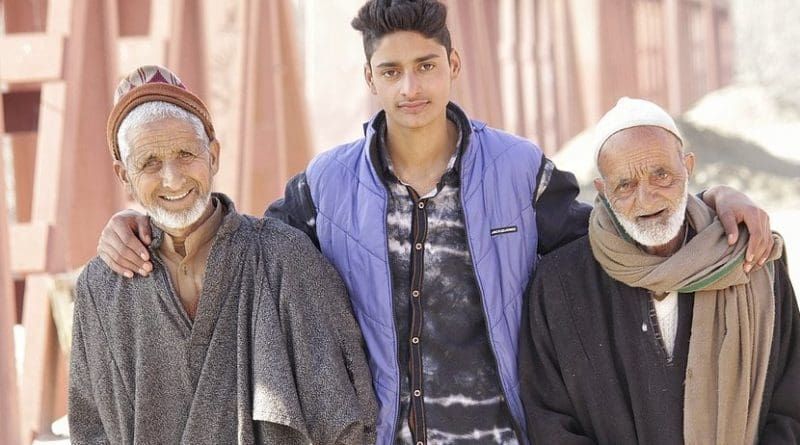Elections In Kashmir – OpEd
By Farooq Wani
In Jammu and Kashmir and especially in Kashmir, the election process, whether it is Lok Sabha or Assembly, has a different connotation since people participation remains cold and restricted. It is so because of the long pending issue of Kashmir problem, which is a festering wound between India and Pakistan. While India claims Kashmir as an, “Integral part” and Pakistan says it is “jugular vein,” the people of Kashmir remain trapped in this vortex of social disruption.
The State Assembly polls in 2014 witness huge voter turnout despite the poll boycott call by separatist leaders. The reins of governance were taken on by a coalition of the PDP and BJP; even as the government was settling down, the killing of Hizb Commander, Burhan Wani, led to a vertical spiral in the security situation, which has gone from bad to worse with time. This apart, due to regular shutdowns and curfews, developmental works in Kashmir have also got delayed. The crippling of economic activity in the Valley has impacted the livelihood of thousands of men and women who depend on the footfall of shoppers, tourists, students, employees and other such categories of people in the cities, towns and other urban centres to make a living.
It is no wonder that the by-election to the Srinagar Lok Sabha Constituency in 2017, held in the shadow of increasing operations, enhanced militant activity and stone pelting, witnessed very less voter turnout. The Anantnag constituency was scheduled to go for by-polls in 2017 along with Srinagar, but it was deferred in view of the tense political and security situation prevalent there. The government got an opportunity to change the narrative during the Panchayat and Local Bodies election held in 2018 but at that stage also the boycott call given by the Hurriyat spoiled things. Apparently, in a matter of three years the euphoria of the elections as witnessed in 2014 has seen a complete turn-around.
The muscular approach that the incumbent government has adopted toward the state has resulted in an escalation of violence with 2018 alone seeing the highest number of civilian casualties in a decade.
With the mass arrest spree of activists and leaders of Jamaat-e-Islami, Jammu Kashmir Liberation Front and other ‘anti-national’ groups and elements, has brought in its wake distrust and insecurity among the masses. An attempt is being made to show these acts as in the interest of the people but the common man does not perceive them as such.
The discourse over the Article 370 and Article 35-A has brought the history of the princely state of Jammu and Kashmir into focus. While ordinary people may not have been aware of the constitutional status of J&K, now they know that the state had its own president and prime minister as part of agreement with the Union of India.
In recent times, there is rising angst over the ban on civilian vehicles on the Udhampur-Baramulla highway for two days each week to facilitate the movement of convoys of security personnel. The highway ban has prompted comparisons with Israel.
Kashmir also found a special mention in the election manifestoes of both national parties – congress and the BJP. However, promises made by both parties in this context are very different from each other. While the BJP has promised abrogation of Article 370 and annulment of Article 35A of the Constitution, the issue of AFSPA grabbed headlines when the Congress manifesto promised to review the need of implementing the legislation in Jammu and Kashmir if the party is voted to power. Vastly differing policies and postures on Kashmir have also build up in the alienation of the people.
As an end result the ongoing parliamentary polls have witnessed extremely low voter turnout in the Kashmir Valley. Official figures have put voter turnout at a 14.1 percent in the constituency consisting of three districts of Srinagar, Budgam and Ganderbal. While as the Baramulla Lok Sabha seat in North Kashmir recorded a decent 35.01 percent voter turnout on 11 April. The Anantnag district of southern Kashmir witnessed a low voter turnout of 13.61% in first phase. The second leg of polling witnessed low percentage of only 10.32 turnout.
It is notable here that polling in this sensitive constituency is being conducted in three phases due to the volatile security situation. While the peripheral areas saw voters coming out in moderate numbers, the main towns including Anantnag and Bijbehara mostly stayed away from the polls. This is the hometown of PDP candidate and former chief minister, Mehbooba Mufti. It is for the first time that Sajjad Lone’s People’s Conference has come out in a big way not only in north Kashmir but also in other parts of the Kashmir region; only time will tell as to how this development politically impacts the Valley.
Prime Minister Narendra Modi, in an interview to TV channel, said that the former Prime Minister Atal Bihari Vajpayee’s formula of “Insaniyat, Kashmiriyat and Jamooriyat” will be applied in Jammu and Kashmir. Modi also said a small section of families in Kashmir speak one thing in the state and another in Delhi. “We need to expose their double standards.
The people of Kashmir are showing negligible interest in the democratic which in turn puts a question mark on the legitimacy of the same. Such a situation does not behove well for a conflict ridden region like Kashmir which requires firm roots of the democratic process. Protagonists must sit and think for larger cause of Kashmir to end this decades old animosity. Those at helm can play a larger role in restoring normalcy and pave the way for emergence of new dawn in Kashmir.

